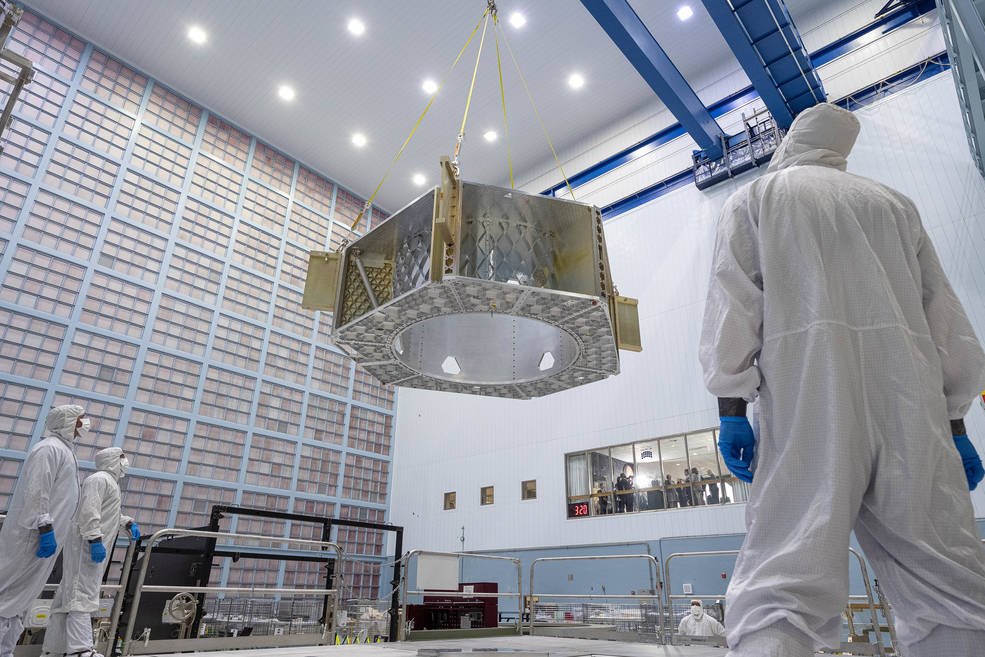The primary structure that will serve as the “bones” of NASA’s Nancy Grace Roman Space Telescope has moved into the big clean room at NASA’s Goddard Space Flight Center in Greenbelt, Maryland. The spacecraft bus, Roman’s primary support element, will now be built upon this skeletal framework. When it launches by May 2027, Roman will help unravel the secrets of dark energy and dark matter, search for and image exoplanets, and explore many topics in infrared astrophysics.
"This is a milestone several years in the making," said Caroline Griffin, a mechanical engineer at Goddard. "The Roman team carefully assembled nearly 2,000 individual components, many of them custom-designed by Goddard engineers, to create this structure."
It’s partly made up of a central cylinder with a top deck that will support most of the observatory. Each of its six sides has a compartment that will house key electronics and other hardware needed to operate the observatory. Major spacecraft elements, such as its power, attitude control, and propulsion systems, will be housed within the primary structure. The high-gain antenna will be installed beneath it, and the lowermost part of the primary structure will attach the spacecraft to the rocket during launch.
The structure is mainly made of a special grade of aluminum that’s strong, yet lightweight. To reduce the weight even further, most of its exterior is partly hollowed out in a triangular pattern called an isogrid. Even though it’s large – about 14 feet (4.3 meters) long, 12 feet (3.7 meters) wide, and 6.5 feet (2 meters) tall – the primary structure weighs just 3,600 pounds (1,600 kilograms). Engineers applied a protective coating to protect it from the environment on Earth and provide the right temperature profile in space. The team has also performed fit checks, ensuring all the components are precisely positioned so additional parts will connect together properly.
The primary structure has now been placed on the Pantheon – a large assembly platform built specifically for Roman. The team is lacing it with the harness, which serves as the spacecraft’s nervous system, and will connect the electronics together in June of 2023.
For more information about the Roman Space Telescope visit: roman.gsfc.nasa.gov or www.nasa.gov/roman. To virtually tour an interactive version of the telescope, visit: https://roman.gsfc.nasa.gov/interactive/.
Image credit: NASA/Jolearra Tshiteya
By Ashley Balzer
NASA’s Goddard Space Flight Center, Greenbelt, Md.
Media Contact:
Claire Andreoli
NASA’s Goddard Space Flight Center
301-286-1940



